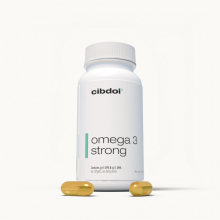What Type of Meat Is Highest in Omega-3 Fatty Acids?
Published:
Omega-3 fatty acids provide many health benefits. Getting enough omega-3s from your diet is important. The main omega-3s are ALA, EPA and DHA. Meat can be a source of omega-3s, but levels vary significantly between types. So which meat actually provides the most omega-3 fatty acids?
Contents:
- Overview of Omega-3 Fatty Acids
- Omega-3 Profile of Beef
- Omega-3 Amounts in Pork
- Omega-3s in Chicken and Turkey
- Highest Omega-3 Meat: Grass-Fed Lamb
- Omega-3 Content of Seafood vs. Meat
- Potential Benefits of Omega-3s in Meat
- Tips to Increase Omega-3s from Meat
- Most Important Dietary Sources of Omega-3s
- Meat and Omega-3 Fatty Acids
- What Type of Meat Is Highest in Omega-3 Fatty Acids? Conclusion
Let's analyze and compare the omega-3 content of different meats to determine which has the highest amount.

Overview of Omega-3 Fatty Acids
Omega-3 fatty acids are a type of polyunsaturated fat that is crucial for health. There are three main dietary omega-3s:
ALA
- Short for alpha-linolenic acid.
- Found mostly in plant foods.
- Offers cardiovascular and anti-inflammatory benefits.
EPA
- Eicosapentaenoic acid.
- Primarily from seafood.
- Supports heart and brain health.
DHA
- Docosahexaenoic acid.
- Mainly from fatty fish and fish oil.
- Vital for eye and brain function.
ALA comes from plant sources while EPA and DHA come from marine sources. Getting adequate amounts of all three forms of omega-3s is important for overall health. But how much omega-3 content do different types of meat provide?
Omega-3 Profile of Beef
Here is a summary of the typical omega-3 amounts in different cuts of beef:
- Total Fat: 5-25% fat depending on leanness of cut (1).
- ALA: None significant.
- EPA & DHA: 10-30mg per 3oz cooked serving (2).
Most beef contains only tiny traces of EPA and DHA omega-3s, while providing no ALA. Fattier cuts slightly higher.
Grain-fed beef contains very little omega-3s. Grass-fed beef can provide 2-3 times more thanks to cows’ omega-3-rich natural diet.
Still, the quantities of beneficial omega-3 fatty acids in even the best beef cuts are quite low.
Omega-3 Amounts in Pork
Here is an overview of the omega-3 quantities in different types of pork:
- Total Fat: 9-45% fat depending on leanness of cut (3).
- ALA: None significant.
- EPA & DHA: 10-25mg per 3oz cooked serving (4).
As with beef, most pork contains only miniscule traces of EPA and DHA, with no ALA content. Fattier cuts like bacon may be slightly higher.
Pasture-raised pigs provide more omega-3s than conventionally farmed pigs due to foraging on omega-3-rich foods. But amounts remain small.
Overall, pork cannot be considered a significant source of omega-3 fats.
Omega-3s in Chicken and Turkey
Here are the typical omega-3 amounts in poultry:
- Chicken Total Fat: Around 5-10% (5).
- Turkey Total Fat: 5-15% depending on cut (6).
- ALA: None significant.
- EPA & DHA: 10-30mg per 3oz cooked serving (7).
Like red meats, poultry provides only tiny traces of marine omega-3s EPA and DHA, and no ALA.
Thighs and legs slightly higher than lean breast meat. Grass-fed and pasture-raised contain more omega-3s but levels remain low.
Poultry cannot be depended on for meaningful amounts of omega-3 fatty acids.
Highest Omega-3 Meat: Grass-Fed Lamb
Of all commonly consumed meats, grass-fed lamb stands out for providing the most omega-3s:
- 3oz serving provides ~100-200mg EPA & DHA (8).
- Also contains small amounts of ALA at ~50mg (9).
- Provides 2-3x more omega-3s than grain-fed lamb (10).
Lamb raised on open pastures eating grass and clover offers the highest omega-3 content compared to other meats. Still low compared to seafood though.
Other grass-fed ruminant meats like bison and venison may also provide slightly higher omega-3 levels than beef or pork. But lamb remains the winner for omega-3s among meats.
Omega-3 Content of Seafood vs. Meat
To put the omega-3 amounts found in meat into perspective, let’s compare to seafood:
- Lamb: 100-200mg EPA/DHA per 3oz
- Salmon: 1,500-2,000mg EPA/DHA per 6oz
- Tuna: Approximately 500-1,000mg EPA/DHA per 6oz
Clearly even the highest omega-3 meat lamb contains far less EPA/DHA compared to seafood like salmon or tuna per typical serving size.
For high omega-3 ALA content, lamb also cannot compare to foods like flaxseeds, walnuts or oils, which provide grams rather than milligrams of ALA.
Overall, meats are negligible sources of omega-3s compared to fatty fish, plant oils, nuts and seeds.
Potential Benefits of Omega-3s in Meat
While very low compared to seafood and plant sources, the small amounts of omega-3s provided by meat may still offer benefits including:
- Supporting heart health. EPA/DHA from meats may help lower inflammation, blood pressure, and other cardiovascular risk factors (11).
- Aiding brain function and mental health. Even limited EPA/DHA may benefit mood, cognition and behavior (12).
- Reducing inflammation. Omega-3s help regulate pro-inflammatory processes (13).
- Supporting eye health. DHA is particularly important for eyesight and visual development (14).
However, therapeutic doses to treat major health conditions are much higher than what meats can provide.
Still, the modest omega-3 content contributes to the overall nutritional value of meats.
Tips to Increase Omega-3s from Meat
Here are some ways to maximize omega-3 intake from meat:
- Choose grass-fed lamb more frequently for its higher omega-3 amounts compared to other meats.
- Opt for pasture-raised and grass-fed beef, pork and poultry when possible for slightly higher omega-3s than conventional.
- Cook using extra virgin olive oil or avocado oil to add additional omega-3 ALA.
- Pair meats with side dishes providing EPA/DHA like salmon or plant-based ALA like Brussels sprouts.
- Add omega-3-rich herbs, spices, nuts or seeds to flavor meat dishes.
- Include sauces made with oils, yogurt or eggs to boost EPA/DHA or ALA.
While meats themselves don’t offer significant omega-3s, preparing them with omega-3-containing ingredients can somewhat increase total intake.
Most Important Dietary Sources of Omega-3s
Since meat is low in omega-3s, it’s important to get them from these foods instead:
EPA/DHA Sources
- Fatty fish: Salmon, mackerel, sardines, herring, trout
- Other seafood: Oysters, mussels, shrimp
- Fish oil, cod liver oil and algal supplements
- Grass-fed dairy products
ALA Sources
- Oils: Flaxseed, soybean, canola, walnut
- Nuts: Walnuts, pecans, pistachios
- Seeds: Flaxseeds, chia seeds, hemp seeds
- Green leafy vegetables, Brussels sprouts
- Herbs: Basil, oregano, cilantro
Aim for at least 8-12 ounces of seafood weekly, along with plant sources of ALA like flaxseeds, walnuts or oils providing 1-2 grams per day.
Meat and Omega-3 Fatty Acids
In summary:
- Most meats provide only tiny traces of omega-3s, mainly 10-30mg EPA/DHA per 3oz serving.
- Grass-fed lamb contains the most at 100-200mg EPA/DHA per serving.
- Meat omega-3 levels are very low compared to seafood, oils, nuts and seeds.
- The small omega-3 amounts in meat may still aid heart and brain health.
- Boost meat omega-3s by choosing grass-fed varieties and cooking with omega-3-rich ingredients.
What Type of Meat Is Highest in Omega-3 Fatty Acids? Conclusion
While meats supply a variety of nutrients, they cannot be counted on as significant sources of omega-3 fatty acids compared to seafood, plant oils, nuts and seeds.
To meet your daily omega-3 needs, be sure to regularly eat fatty fish, walnuts, flaxseeds, chia seeds and oils like flaxseed oil. Meat can contribute small amounts as part of an overall diet providing anti-inflammatory omega-3 fats for good health.










